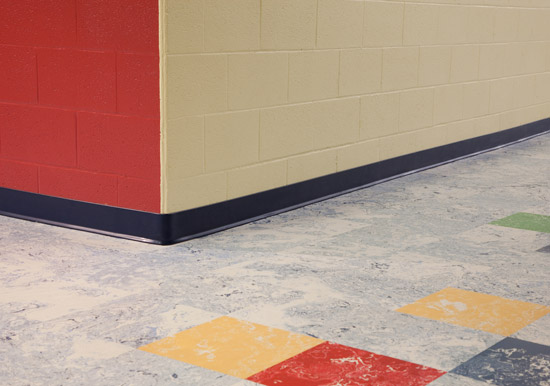New Sustainable and Aesthetic Options in Finishing Borders (Wall Base)
Learning Objectives:
- Explain the difference between toe and toeless styles of wall base and identify the applications for which each is best suited.
- Compare popular wall base materials in terms of performance, sustainability and cost.
- Consider new bio-based and wood alternative wall base solutions for healthcare and commercial applications.
- Specify the wall base that best meets the aesthetic, performance and sustainability demands of the project.
Credits:
Finishing borders, also referred to as wall base, are the architect’s solution for concealing the gap between the wall and the floor in the built environment. This building component provides the finishing touch to a space as well as general protection from the open exposure between the drywall and the floorboards.
In the past, designers have chosen the right wall base for a project based on the color, style, material and cost. Now, as the design community and building owners become more invested in the idea of green building and sustainable design, designers want the ability to evaluate wall base solutions on the basis of the product’s overall sustainability as well.
Today, designers can select a wall base that will provide the desired aesthetic, perform as needed, meet budgetary demands, and contribute toward the project’s sustainability objectives and it can make this contribution throughout a building, wherever the walls meet the floor.
The Basics for Selecting a Wall Base
Traditionally, when a designer selects a wall base for a project, the material, shape (style), size, performance and price point are all considered.
Materials
Wall base is available in a variety of materials, including, wood, steel, carpet, rubber and vinyl. Today, wall base made of rubber and vinyl, often referred to as resilient wall base, can offer specifiers a less expensive wall base solution that is without the issues of durability, fit, and maintenance commonly experienced when wood, steel, or carpet wall base is selected for a job.
 |
New sustainable and aesthetic wall base solutions offer designers more options for concealing the gap between the wall and the floor. Photo courtesy of Tarkett |










